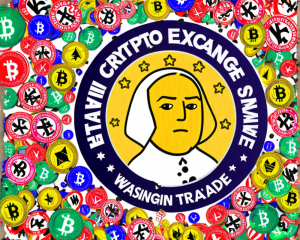The Rise of Synthetic Asset Platforms (SAPs)
In the fast-paced world of DeFi, synthetic asset platforms (SAPs) are the hot shots of the block! These platforms allow users to mint synthetic assets—derivatives that have their values pegged to real-world assets in real-time. Thanks to oracles providing reliable price feeds, you can trade virtually anything from stocks and crypto to that priceless beanie baby you’ve been hoarding. The beauty? All this can be done without leaving the comfy confines of your beloved blockchain ecosystem, mainly sitting pretty on Ethereum. However, before you dive headfirst into the pool of possibilities, it’s essential to know that not all that glitters is gold.
Collateralized Debt: A Necessary Evil?
Collateralized debt is basically that friend who always borrows money but can’t pay it back when things get tough. In traditional finance, collateralized debt instruments—think mortgages—are major players, racking up a value of nearly $1 trillion. The term itself might sound like a Shakespearean tragedy, “death pledge,” which doesn’t exactly inspire warm and fuzzy feelings. But for many who rode the 2008 financial crisis like a rollercoaster, these terms feel like appropriate descriptors of their financial ‘collateral damage.’
The Dreaded Liquidation Clause
Let’s break this down because, much like a bad haircut, it deserves some attention. To receive a loan, a borrower hands over collateral that a lender locks up tighter than your aunt’s secret cookie recipe. If the borrower can’t keep up the payments, the lender can snatch that collateral faster than you can say “liquidation.” And we all know how the crypto market loves its rollercoaster rides; a sudden downturn can leave collateral worth far less than expected!
Lessons from MakerDAO
Take MakerDAO, for instance. It’s a decentralized SAP but really, it’s like an adventurous cat who always lands on its feet—most of the time. MakerDAO has a collateralized stablecoin called DAI pegged to the U.S. dollar. However, the collateral backing DAI consists of the notoriously shaky assets like Ether (ETH) and Bitcoin (BTC) which can be more unpredictable than a toddler after a sugar high. As a safety net, they enforce a 150% collateralization requirement, which sounds fancy until you realize it means users only get back two-thirds of what they put in. Talk about a letdown!
Stagnation Meets Innovation
Welcome to a DeFi plateau, where innovation appears to be stuck in gridlock like rush hour traffic. To jump-start this stagnation, we need a radical overhaul of how collateral is managed. Forget optimization; let’s talk transformation! With 2022 lurking around the corner, it’s time for a new model: the burn-and-mint collateralization. Imagine this: instead of locking up collateral and facing liquidation and margin calls, users can actually burn their collateral to mint synthetics and vice versa—with no nasty surprises!
The Burn-and-Mint Protocol In Action
Under this new miracle model, you put in a dollar, you get a dollar’s worth of synthetics. Simple, right? Plus, when it’s time to cash out, you can mint your original collateral back, with the protocol ensuring that everything balances out. Almost like having your cake, eating it too, and still being able to take leftovers home!
The Future: All Eyes on Liquidity Management
As the DeFi landscape shifts gears, liquidity management will rise to the forefront. Platforms with robust liquidity will set themselves apart from those that can barely keep the lights on. To put it simply, deep liquidity enables SAPs to handle significant transactions without causing wild price swings that make you feel like you’re on a shaky bridge. And isn’t stability what we all desire at the end of the day? So, as 2022 unfolds, let’s keep our eyes peeled for SAPs that figure out how to juggle collateral management and liquidity effectively!
Final Thoughts
So, the takeaway here is that while the DeFi universe is teeming with potential, its evolution hinges on disrupting the archaic ways we manage collateral. As the saying goes, “The only constant is change,” and we’re here for it, with popcorn in hand!
Disclaimer: This article doesn’t offer investment advice. Every move comes with risks, and you should always do your own research before diving in.















+ There are no comments
Add yours